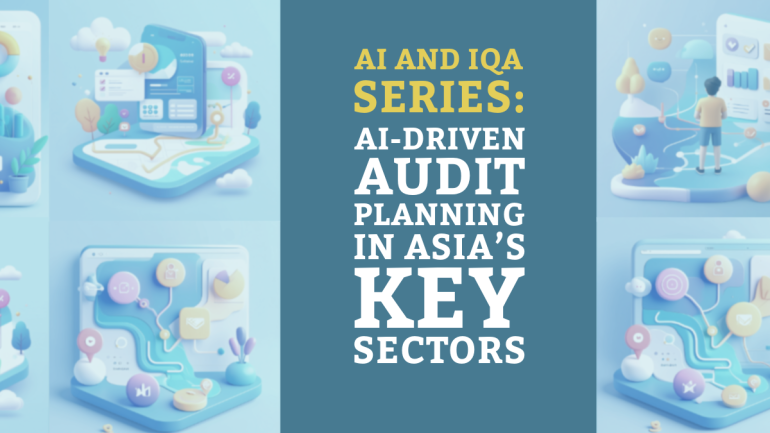This website uses cookies so that we can provide you with the best user experience possible. Cookie information is stored in your browser and performs functions such as recognising you when you return to our website and helping our team to understand which sections of the website you find most interesting and useful.
Table of Contents
TL;DR: Staff Surveys
- Insights into Employee Sentiment: Staff surveys provide valuable insights into the sentiments and perceptions of employees within the organization.
- Identifying Areas for Improvement: Surveys help in identifying areas within the organization that need improvement in terms of communication, leadership, workflow, and other aspects.
- Enhanced Employee Engagement: By giving employees a voice through surveys, organizations can enhance employee engagement and establish a culture of open communication.
- Strategic Decision Making: The data gathered from staff surveys can aid in making strategic decisions that align with the goals and objectives of the organization.
- Driving Organizational Development: Staff surveys serve as tools for organizational development by enabling leaders to address challenges, implement changes, and foster a positive work environment.
With the ever-evolving landscape of the modern workplace, staff surveys have emerged as imperative tools for organizational development. These surveys offer insightful data into employee satisfaction, engagement levels, and overall workplace culture. By leveraging the power of staff surveys, organizations can identify areas of improvement, potential risks, and opportunities for growth within their workforce. This blog post will probe into the importance of staff surveys and how they can drive positive change within an organization.
Designing Effective Staff Surveys
Determining Survey Objectives
Effective staff surveys begin with a clear understanding of the objectives you aim to achieve. Little can be accomplished without a focused direction. Whether you want to measure employee engagement, assess training needs, or gather feedback on leadership, defining your goals is crucial for the success of the survey.
Crafting Engaging and Relevant Questions
Determining the right questions to ask is paramount in crafting an effective staff survey. Each question should serve a specific purpose aligned with your objectives. Avoid vague or biased questions that may skew the results. Ensuring clarity and relevance in your survey questions will enhance the quality of the feedback you receive.
This stage is where the success of your survey truly lies. Creating questions that are clear, concise, and unbiased will not only make it easier for employees to respond but also provide you with valuable insights into their perceptions and experiences. Take the time to review and refine your questions to guarantee the effectiveness of your staff survey.
Execution Strategies for Staff Surveys
Selecting the Right Survey Medium
While planning to conduct staff surveys, it is crucial to select the right survey medium that aligns with your organizational culture and the preferences of your employees. Whether it is online surveys, paper-based questionnaires, or face-to-face interviews, choosing the most suitable medium can significantly impact the success of your survey.
Maximizing Participation Rates
To ensure high participation rates in staff surveys, it is crucial to carefully consider timing, communication, and incentives. Clear and timely communication about the purpose and benefits of the survey can motivate employees to participate. Offering incentives such as gift cards or extra time off can also boost engagement levels.
Maximizing Participation Rates
To further maximize participation rates, consider sending out reminders to employees, creating a sense of urgency, and emphasizing the importance of their feedback in shaping the future of the organization. Engaging with managers can also encourage their teams to participate and show that leadership values their input.
Analyzing Survey Data
Tools and Techniques for Data Analysis
Data analysis is a crucial step in deriving valuable insights from staff surveys. Utilizing statistical software such as SPSS, Excel, or Google Sheets can assist in organizing and analyzing data efficiently. Techniques like descriptive statistics, correlation analysis, and regression analysis help identify patterns, trends, and relationships within the data. Visualization tools like charts and graphs can also aid in presenting findings effectively.
Translating Insights into Action
On completion of data analysis, the next step is translating insights into action. This process involves interpreting the survey findings to identify key areas for improvement or development within the organization. The insights gained can inform strategic decisions, policy changes, or targeted interventions to enhance employee satisfaction, productivity, and overall organizational performance.
Plus, it is important to prioritize actions based on the severity and impact of issues identified in the survey. Focusing on the most critical areas first can lead to more significant improvements and positive outcomes for the organization. Clear communication of survey results and action plans with employees is also crucial for transparency and fostering a culture of continuous improvement.
Leveraging Survey Results
Improving Internal Processes
One powerful way to leverage the results of staff surveys is by focusing on improving internal processes. By analyzing the feedback provided by employees, organizations can identify areas where efficiency can be enhanced, communication can be streamlined, and workflow can be optimized. It allows management to pinpoint bottlenecks, address inefficiencies, and implement solutions that can have a direct impact on productivity and overall organizational performance.
Enhancing Employee Satisfaction and Retention
Internal surveys play a crucial role in enhancing employee satisfaction and retention within an organization. Employee satisfaction is directly linked to productivity, engagement, and performance. By listening to the concerns and suggestions of employees through surveys, organizations can gain valuable insights into what motivates their staff, what challenges they face, and what improvements can be made to create a positive work environment. Improving employee satisfaction ultimately leads to higher retention rates, lower turnover, and a more engaged workforce.
Employee satisfaction is not just a buzzword; it is a critical component of organizational success. Happy employees are more productive, creative, and loyal, leading to a positive work culture and a strong employer brand. Organizations that prioritize employee satisfaction through survey evaluations and action plans are more likely to attract and retain top talent, reduce absenteeism, and foster a collaborative and thriving workplace environment.
Overcoming Challenges with Staff Surveys
Addressing Survey Fatigue
Challenges often arise when organizations conduct frequent staff surveys, leading to survey fatigue among employees. This can result in decreased participation rates and less reliable feedback. To address this issue, it is necessary to carefully plan the timing and frequency of surveys, ensuring that each survey is relevant and valuable to employees. Engaging with staff prior to each survey to explain its purpose and how their feedback will be used can also help combat survey fatigue.
Ensuring Anonymity and Data Security
Challenges with ensuring anonymity and data security can deter employees from providing honest feedback in staff surveys. It is crucial to implement strict measures to protect employee data, such as using secure survey platforms, encrypting responses, and providing assurances of anonymity. Clear communication about the confidentiality of responses and the steps taken to safeguard data can help build trust among employees.
Addressing both survey fatigue and concerns about anonymity and data security are vital in maximizing the effectiveness of staff surveys for organizational development. By proactively addressing these challenges, organizations can ensure that staff surveys remain a valuable tool for gaining insights and driving positive change within the workplace.
Future Trends in Staff Surveys
The Role of Technology and AI
Keep an eye on the evolving role of technology and artificial intelligence in staff surveys. With advancements in technology, organizations are increasingly using sophisticated tools to gather and analyze employee feedback. AI-powered platforms can help in data interpretation, sentiment analysis, and even identifying trends that might go unnoticed by human analysts.
Predictive Analysis and Strategic Planning
Trends indicate a shift towards using predictive analysis and strategic planning based on staff survey data. By leveraging predictive analytics, organizations can anticipate future trends, such as employee turnover or engagement levels, enabling proactive interventions. Strategic planning based on these insights can help in mitigating risks, improving employee satisfaction, and ultimately enhancing organizational performance.
Planning: Organizations that embrace these future trends in staff surveys can gain a competitive edge by making data-driven decisions, prioritizing employee well-being, and optimizing their human capital for long-term success.
To wrap up
Summing up, staff surveys play a crucial role as tools for organizational development. They provide valuable insights into employee perceptions, satisfaction levels, and areas for improvement within the workplace. By regularly conducting staff surveys, organizations can identify trends, address issues, and ultimately create a more positive and productive work environment. It is important for organizations to use the feedback gathered from these surveys to make informed decisions and implement strategies that enhance employee engagement and performance. Ultimately, staff surveys are important for fostering a culture of continuous improvement and ensuring long-term success for the organization.
FAQ
Q: What is the purpose of staff surveys in organizational development?
A: Staff surveys are tools used in organizational development to gather feedback and insights from employees. This feedback helps identify areas for improvement, measure employee satisfaction, and make informed decisions to enhance overall organizational performance.
Q: How are staff surveys conducted?
A: Staff surveys can be conducted through online platforms, paper questionnaires, or in-person interviews. The survey questions are carefully designed to collect relevant data on various aspects such as leadership, communication, work environment, and employee engagement.
Q: What are the benefits of using staff surveys?
A: Staff surveys provide valuable information that can help organizations better understand their employees’ needs, concerns, and areas of satisfaction. This information can lead to improved communication, increased employee engagement, higher retention rates, and ultimately, a more productive workforce.
Q: How often should staff surveys be conducted?
A: The frequency of staff surveys can vary depending on the organization’s size, goals, and resources. However, it is recommended to conduct surveys at least once a year to track progress, measure the impact of organizational changes, and address any emerging issues in a timely manner.
Q: How can organizations ensure the effectiveness of staff surveys?
A: To ensure the effectiveness of staff surveys, organizations should communicate the purpose of the survey clearly, guarantee confidentiality to encourage honest feedback, act on the survey results promptly, and involve employees in the decision-making process based on the survey findings.





